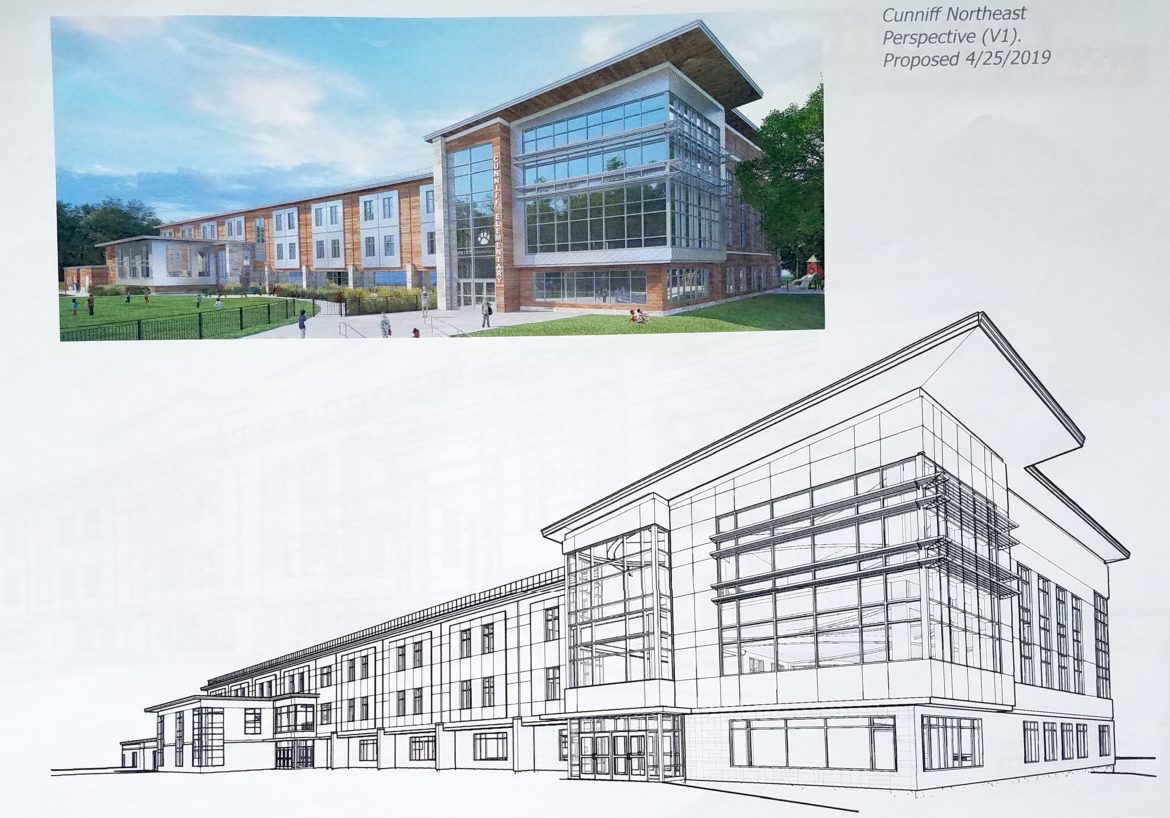
The latest drawings for the entrance to the new Cunniff Elementary School provides a simpler design and removes the stone features that architects had previously considered.
Members of the School Building Committee, which oversees the projects at Watertown’s three elementary schools, did not care for the previous design. Some said they thought a large stone feature around the three-story entryway seemed too imposing, looked cold and did not seem inviting.
At the Aug. 7 meeting, Scott Dunlap, of Ai3 Architects, said the design not only changes the look of the entrance, but improves it functionally, too.
“The (stone) pilaster really blocks the visual sight line from the building,” Dunlap said. “The new design pushes pushes out the entrance, and keeps and open sight line.”
Another feature is an overhang to protect people from the elements at the entrance to the school.
In addition, the size of the large glassy area on the corner of the building where the library/media center is located was slightly reduced, Dunlap said.
The changes pleased members of the School Building Committee, including Town Council President Mark Sideris.
“From my perspective this looks a lot better,” Sideris said. “It is a much cleaner approach. There were quite a few comments at the last meeting about how the entrance was portrayed.
Green/Sustainability Goals
The design of the three elementary school projects is nearly completion, and Ai3 has produced Design Development Summaries for each school. Among other things covered in the Reports is the progress toward meeting the green and sustainability goals the committee has set.
At the two new school buildings — Cunniff and Hosmer — the goal is to reach the LEED (Leaders in Energy and Environmental Design) Gold standard. To reach that the projects must get between 60 and 79 points in the LEED scorecard.
Points are awarded in several areas, including transportation, sustainable sites, water efficiency, energy & atmosphere, materials, indoor environmental quality, and innovation.
A LEED consultant looked at the designs and awarded 59 points with another 40 that are considered possible points, which were designated with question marks, Dunlap said.
“We need to move some of the question marks to yeses,” Dunlap said. “We need to push about 10 points from the possible column to the yes column.”
